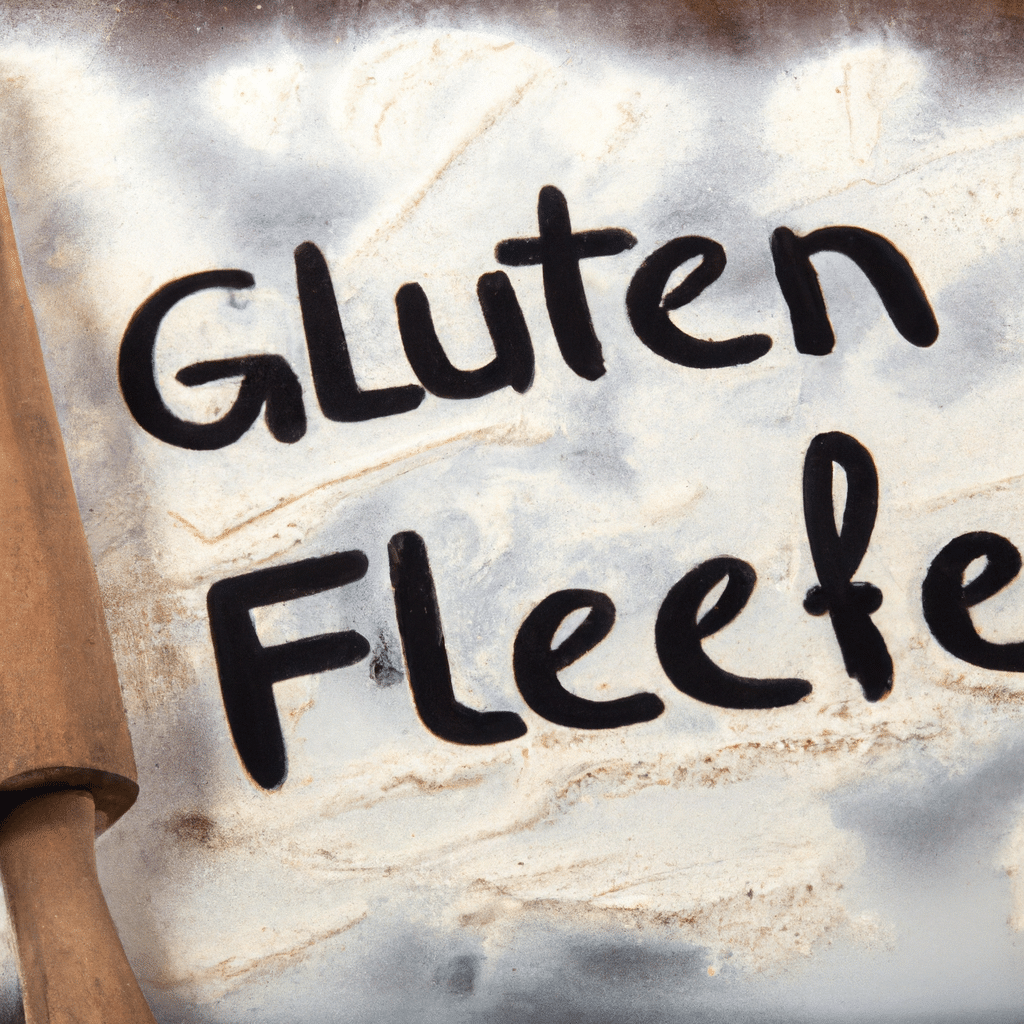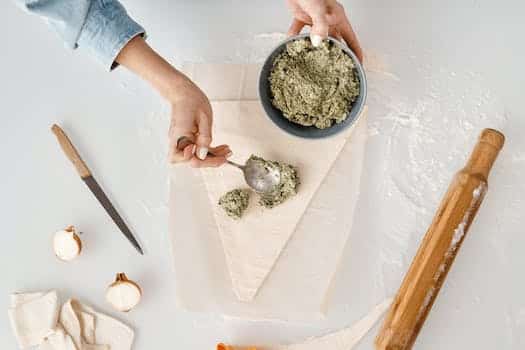Are you looking for delicious baking recipes that are gluten-free? Look no further! In this article, we will explore a variety of mouthwatering recipes that use gluten-free flour. Whether you have dietary restrictions or simply prefer to avoid gluten, these recipes will satisfy your cravings without compromising on taste and texture. Get ready to indulge in a world of delectable gluten-free treats!
- 1. Introduction
- 1.1. What is gluten-free flour?
- 1.2. Benefits of using gluten-free flour in baking
- 1.3. Tips for baking with gluten-free flour
- 1.4. Common types of gluten-free flours
- 1.5. How to substitute gluten-free flour in recipes
- 2. Gluten-Free Baking Recipes
- 2.1. Gluten-Free Chocolate Chip Cookies
- 2.2. Gluten-Free Banana Bread
- 2.3. Gluten-Free Blueberry Muffins
- 2.4. Gluten-Free Pizza Dough
- 2.5. Gluten-Free Vanilla Cupcakes
- 3. Tips for Successful Gluten-Free Baking
1. Introduction
Baking is a delightful and creative activity that brings joy to many. However, for those with gluten intolerance or sensitivity, finding delicious recipes that cater to their dietary needs can be a challenge. Luckily, with the availability of gluten-free flour, baking has become more accessible and enjoyable for everyone. In this article, we will explore a collection of mouthwatering baking recipes that utilize gluten-free flour. Whether you’re a seasoned baker or a beginner, these recipes will inspire you to create delectable treats that are safe for gluten-sensitive individuals. Get ready to embark on a delicious baking journey filled with flavor, texture, and gluten-free goodness!
1.1. What is gluten-free flour?
Gluten-free flour refers to any type of flour that does not contain gluten, a protein found in wheat, barley, and rye. It is a popular alternative for individuals with gluten intolerance or those following a gluten-free diet. Gluten is responsible for the elasticity and structure in traditional baking, so gluten-free flours are often combined with other ingredients to mimic the desired texture in baked goods. There are various types of gluten-free flours available, including rice flour, almond flour, coconut flour, and tapioca flour, each with its own unique characteristics and flavor profile. In this article, we will explore the world of delicious baking recipes that utilize gluten-free flour, allowing individuals with dietary restrictions to still enjoy their favorite treats.
1.2. Benefits of using gluten-free flour in baking
Gluten-free flour has gained popularity in recent years as a healthier alternative for baking. With an increasing number of people opting for gluten-free diets due to allergies or dietary restrictions, using gluten-free flour in baking recipes has become a common practice. Not only does it cater to individuals with gluten intolerance, but it also offers several benefits that enhance the overall quality of baked goods. In this article, we will explore the advantages of using gluten-free flour in baking and how it can contribute to creating delicious and satisfying treats.
1.3. Tips for baking with gluten-free flour
Baking with gluten-free flour can be a rewarding and delicious experience. Whether you have a gluten intolerance or simply want to explore new baking options, using gluten-free flour opens up a world of possibilities. However, it’s important to keep in mind that gluten-free baking requires some adjustments to ensure successful results. In this section, we will provide you with valuable tips to help you achieve the best outcomes when using gluten-free flour in your baking recipes.
1.4. Common types of gluten-free flours
When it comes to baking delicious treats without gluten, there are several types of gluten-free flours available that can be used as alternatives. These flours are made from various grains and starches that do not contain gluten, making them suitable for individuals with gluten sensitivities or those following a gluten-free diet.
One common type of gluten-free flour is rice flour. Rice flour is made from finely ground rice grains and has a slightly gritty texture. It is commonly used in baking cakes, cookies, and bread.
Another popular gluten-free flour is almond flour. Almond flour is made from blanched almonds that have been ground into a fine powder. It has a rich, nutty flavor and works well in recipes for muffins, pancakes, and macarons.
Corn flour, also known as cornmeal, is another gluten-free option. It is made from dried corn kernels that have been ground into a fine powder. Corn flour is often used in baking cornbread, tortillas, and muffins.
Potato flour is another gluten-free flour that is made from dried potatoes that have been ground into a fine powder. It has a light, fluffy texture and is commonly used in recipes for pancakes, waffles, and bread.
Lastly, tapioca flour, also known as tapioca starch, is a gluten-free flour made from the starchy root of the cassava plant. It has a smooth texture and is often used as a thickening agent in recipes for pies, puddings, and sauces.
These are just a few examples of the common types of gluten-free flours that can be used in baking. Each flour has its own unique properties and flavors, allowing for a wide variety of delicious gluten-free baked goods to be enjoyed by everyone.
1.5. How to substitute gluten-free flour in recipes
When it comes to baking, using gluten-free flour can be a great alternative for those with gluten sensitivities or celiac disease. However, it is important to know how to properly substitute gluten-free flour in recipes to ensure the best results. In this article, we will explore various tips and techniques for substituting gluten-free flour in your favorite baking recipes. Whether you are a seasoned gluten-free baker or just starting out, these delicious baking recipes with gluten-free flour will surely satisfy your cravings and leave you wanting more.
2. Gluten-Free Baking Recipes
Are you someone who loves to bake but needs to follow a gluten-free diet? Look no further! We have gathered some delicious baking recipes that use gluten-free flour, so you can still enjoy your favorite treats without worrying about gluten. Whether you’re craving cookies, cakes, or bread, we have a recipe for you. So grab your apron and let’s get baking!
2.2. Gluten-Free Banana Bread
Gluten-Free Banana Bread is a delightful treat for those following a gluten-free diet. This recipe uses gluten-free flour, making it suitable for individuals with gluten sensitivities or celiac disease. The combination of ripe bananas, aromatic spices, and a moist texture makes this banana bread a favorite amongst gluten-free baking enthusiasts. Whether you have dietary restrictions or simply enjoy experimenting with new recipes, this gluten-free banana bread is a must-try. It’s easy to make and guarantees a delicious outcome that everyone can enjoy.
2.3. Gluten-Free Blueberry Muffins
Gluten-Free Blueberry Muffins are a delightful treat for those following a gluten-free diet. These muffins are made using gluten-free flour, ensuring that they are safe and suitable for individuals with gluten sensitivities or celiac disease. The combination of juicy blueberries and a moist, fluffy texture makes these muffins a favorite among gluten-free baking enthusiasts. Whether you are looking for a delicious breakfast option or a tasty snack, these muffins are sure to satisfy your cravings. Try this gluten-free recipe today and indulge in the goodness of freshly baked blueberry muffins without worrying about gluten!
2.4. Gluten-Free Pizza Dough
Gluten-Free Pizza Dough
When it comes to gluten-free baking, finding a delicious and reliable pizza dough recipe can be a game-changer. With the right ingredients and techniques, you can create a gluten-free pizza that rivals the traditional ones.
To make a gluten-free pizza dough, you’ll need gluten-free flour blend, yeast, warm water, olive oil, salt, and a pinch of sugar. Start by activating the yeast in warm water and sugar mixture. Then, combine the activated yeast with the gluten-free flour blend and salt. Gradually add olive oil and mix until a dough forms.
Next, knead the dough for a few minutes until it becomes smooth and elastic. Allow the dough to rise in a warm place until it doubles in size. Once it has risen, gently punch down the dough and transfer it to a floured surface. Roll out the dough into a desired pizza shape, adding more flour if needed to prevent sticking.
Now, you’re ready to add your favorite toppings and bake the pizza in a preheated oven. Keep an eye on the crust and bake until it turns golden brown and crispy. The result will be a flavorful gluten-free pizza crust that satisfies your cravings and allows you to indulge in a classic dish without the gluten.
Whether you have dietary restrictions or simply want to explore gluten-free baking, this pizza dough recipe is a must-try. It provides a great base for creating your own gluten-free pizza masterpiece, allowing you to enjoy this beloved comfort food with a twist. So, gather your ingredients, roll up your sleeves, and get ready to make a delicious gluten-free pizza at home!
2.5. Gluten-Free Vanilla Cupcakes
Gluten-Free Vanilla Cupcakes are a delightful treat for those who follow a gluten-free diet. These cupcakes are made with gluten-free flour, which is a great alternative for individuals with gluten sensitivities or celiac disease. The use of vanilla adds a rich and aromatic flavor to the cupcakes, making them even more irresistible. Whether you have a special occasion or simply want to satisfy your sweet tooth, these gluten-free vanilla cupcakes will surely impress your taste buds. With the right ingredients and a little bit of baking magic, you can create a batch of these delicious cupcakes that are both gluten-free and incredibly tasty.
3. Tips for Successful Gluten-Free Baking
When it comes to successful gluten-free baking, there are a few tips to keep in mind. First and foremost, it’s important to choose the right gluten-free flour. There are many options available, such as almond flour, rice flour, or a blend of different flours. Experiment and find the one that works best for your recipes.
Another tip is to add xanthan gum or guar gum to your gluten-free flour. These additives help mimic the structure and texture that gluten provides in traditional baking. They act as binders and improve the overall texture of your baked goods.
In gluten-free baking, it’s crucial to measure your ingredients accurately. Use measuring cups and spoons specifically designed for dry ingredients, and level off each measurement to ensure consistency. Gluten-free flours can be more finicky than regular flours, so precision is key.
Additionally, don’t forget to add some extra moisture to your gluten-free recipes. Gluten-free flours tend to absorb more liquid, so adding a bit more liquid, such as milk or water, can help prevent dryness in your baked goods.
Lastly, be patient and allow your gluten-free baked goods to cool completely before enjoying them. Gluten-free flours need more time to set and develop their texture, so resist the temptation to cut into a warm loaf of bread or cake.
By following these tips, you’ll be well on your way to successful gluten-free baking and can enjoy delicious treats without the gluten!
3.1. Measure ingredients accurately
When it comes to gluten-free baking, measuring ingredients accurately is crucial for successful results. Gluten-free flours and other ingredients can vary in texture and density, so precise measurements are essential to achieve the desired texture and taste. Here are some tips to ensure accurate measurements for gluten-free baking:
1. Use a kitchen scale: Measuring ingredients by weight is the most accurate method for gluten-free baking. Different gluten-free flours have different weights, so using a scale ensures consistency in your recipes.
2. Spoon and level dry ingredients: Instead of scooping flour directly from the container, use a spoon to gently fill the measuring cup. Then, level off the excess with a straight edge. This method prevents densely packed flour and yields more accurate measurements.
3. Use measuring spoons for small quantities: When measuring small quantities of ingredients like baking powder or spices, use measuring spoons rather than estimating. Even a slight variation in these ingredients can affect the outcome of your gluten-free baked goods.
4. Sift flour before measuring: Gluten-free flours can clump together, so it’s important to sift them before measuring. Sifting helps to break up any lumps and ensures a more consistent measurement.
5. Avoid compacting ingredients: When measuring ingredients like brown sugar or almond meal, gently spoon them into the measuring cup without packing them down. Compact ingredients can lead to inaccurate measurements and affect the texture of your baked goods.
By following these tips and measuring ingredients accurately, you can achieve delicious results in your gluten-free baking endeavors!
3.2. Blend gluten-free flours for better results
When it comes to gluten-free baking, using a blend of different gluten-free flours can often yield better results than using a single type of flour. This is because each gluten-free flour has its own unique properties and taste, and combining them can help create a more balanced and flavorful final product.
There are several gluten-free flours available in the market, such as rice flour, almond flour, coconut flour, tapioca flour, and sorghum flour, among others. Each flour has its own characteristics and works best in specific types of baked goods.
By blending different gluten-free flours, you can take advantage of their individual strengths and create a blend that is suitable for a wide range of recipes. For example, combining rice flour, almond flour, and tapioca flour can result in a blend that works well for cakes and cookies, providing a light and fluffy texture.
Experimenting with different flour blends can also help enhance the nutritional value of your gluten-free baked goods. For instance, adding coconut flour to your blend can increase the fiber content, while incorporating sorghum flour can boost the protein content.
It is important to note that when blending gluten-free flours, you may need to adjust the quantities and ratios to achieve the desired texture and taste. It is recommended to start with equal parts of each flour and make adjustments based on the recipe and personal preference.
In conclusion, by blending gluten-free flours, you can improve the overall texture, flavor, and nutritional profile of your gluten-free baked goods. Don’t be afraid to experiment with different combinations and ratios to find the perfect blend for your favorite recipes!
3.3. Add xanthan gum or guar gum as a binder
When it comes to gluten-free baking, adding a binder such as xanthan gum or guar gum can greatly improve the texture and structure of your baked goods. These binders help to replicate the elasticity and binding properties that gluten provides in traditional baking.
Xanthan gum is a popular choice for gluten-free baking as it is derived from fermented sugar and is highly effective in small quantities. It acts as a thickening and stabilizing agent, helping to prevent crumbling and improve the overall texture of your gluten-free baked goods.
Guar gum, on the other hand, is extracted from the guar bean and also works well as a binder in gluten-free baking. It helps to create a smooth and cohesive dough, resulting in a softer and less crumbly final product.
When using xanthan gum or guar gum as a binder, it is important to follow the recommended measurements provided in your gluten-free baking recipe. Adding too much gum can lead to a gummy or slimy texture, while adding too little may result in a crumbly or dry texture.
Experimenting with different ratios of xanthan gum or guar gum in your gluten-free recipes can help you achieve the desired texture and structure. It’s also important to note that some recipes may not require the use of a binder, especially if they already contain ingredients that provide natural binding properties.
In conclusion, adding xanthan gum or guar gum as a binder can greatly enhance the success of your gluten-free baking. It helps to create a more cohesive dough, improves texture, and prevents crumbling. Remember to follow the recommended measurements and experiment to find the perfect balance for your delicious gluten-free recipes.
3.4. Allow baked goods to cool completely
Allowing baked goods to cool completely is an essential step in gluten-free baking. When baking with gluten-free flour, it is important to let your creations cool down completely before enjoying them. This allows the texture and flavors to fully develop and ensures that the baked goods hold their shape. Gluten-free baked goods tend to be more delicate and crumbly, so cooling them completely will help them set and become more stable. Additionally, allowing the baked goods to cool completely will make it easier to handle and slice them without them falling apart. So, exercise patience and resist the temptation to dig into your freshly baked gluten-free treats right away. Give them the time they need to cool down, and you’ll be rewarded with delicious and perfectly baked goodies.
3.5. Experiment with different gluten-free flour blends
Experimenting with different gluten-free flour blends is key to successful gluten-free baking. While there are many pre-made gluten-free flour blends available in the market, creating your own blend can give you more control over the taste and texture of your baked goods.
When experimenting with different gluten-free flour blends, it’s important to consider the ingredients and ratios. A good starting point is a blend of rice flour, tapioca flour, and potato starch. This blend provides a good balance of texture and flavor.
However, don’t be afraid to get creative and try out other gluten-free flours such as almond flour, coconut flour, or even quinoa flour. Each flour has its own unique properties, and by blending them together, you can achieve different results.
It’s also important to note that the ratios of the flours can greatly affect the final outcome. Some flours absorb more moisture than others, so adjusting the ratios can help you achieve the desired consistency.
Remember to keep track of the flour ratios and the results of each experiment. This will help you understand which blends work best for different types of baked goods.
In conclusion, experimenting with different gluten-free flour blends is a fun and essential part of successful gluten-free baking. Don’t be afraid to mix and match flours, adjust ratios, and document your findings. With time and practice, you’ll be able to create delicious gluten-free baked goods that rival their traditional counterparts.
Conclusion
In conclusion, baking with gluten-free flour doesn’t mean sacrificing taste or texture. With these delicious baking recipes, you can enjoy all your favorite treats without the gluten. Whether you have dietary restrictions or simply want to try something new, these recipes will satisfy your cravings and leave you wanting more. So, grab your gluten-free flour and get ready to indulge in some mouthwatering baked goods!





10 Comments
Jaquenette Goss
1 year agoThese gluten-free baking recipes are truly a game-changer! Ive always struggled to find delicious treats that cater to my dietary needs, but these mouthwatering recipes have completely exceeded my expectations. The scrumptious flavors and textures are simply irresistible. I highly recommend giving them a try today – you wont be disappointed!
Dulciana Soren
1 year agoYum! These gluten-free baking recipes look absolutely delicious! I cant wait to try them and satisfy my cravings while still sticking to my dietary needs. Thanks for sharing, Ill definitely be giving these scrumptious treats a go today!
Jolie Alleris
1 year agoThese gluten-free baking recipes are truly a game-changer for those with specific dietary needs. I appreciate how this post highlights the fusion of taste and health, offering mouthwatering options that can satisfy any craving. Its great to see an emphasis on inclusivity in the culinary world, where everyone can indulge in scrumptious treats without compromising their health. I cant wait to try out these recipes and explore the delectable world of gluten-free baking!
Tracey Lief
1 year agoThese gluten-free baking recipes seem absolutely delightful! I am thrilled to discover mouthwatering treats that not only satisfy my cravings but also cater to my dietary needs. I cannot wait to try these scrumptious recipes and indulge in a guilt-free baking experience. Thank you for sharing this incredible collection!
Tess Lorri
1 year agoWow! These gluten-free baking recipes sound absolutely delicious and perfect for those of us with special dietary needs. I cant wait to try these mouthwatering treats and satisfy my cravings. Thanks for sharing!
Maryl Leonelle
1 year agoAs a normal human visitor, I am delighted to come across this post showcasing a collection of mouthwatering gluten-free baking recipes. It is commendable to see a focus on satisfying both our cravings and dietary needs simultaneously. The promise of scrumptious treats that cater to gluten-free requirements is undoubtedly appealing.
I am intrigued by the invitation to try these recipes today, as it implies immediate accessibility and convenience. It is reassuring to know that there are options available that can accommodate gluten-free diets without compromising on taste and enjoyment.
I eagerly look forward to exploring these recipes and indulging in the delightful world of gluten-free baking. Thank you for sharing this valuable resource, and I am excited to embark on this culinary journey.
Dolorita Nicodemus
1 year agoThese gluten-free baking recipes are absolutely fantastic! They not only cater to my dietary needs but also satisfy my cravings perfectly. I highly recommend giving these scrumptious treats a try today!
Ingrid Lodmilla
1 year agoThank you for sharing this post on gluten-free baking recipes. As someone who follows a gluten-free diet, I am constantly on the lookout for delicious treats that align with my dietary needs. The prospect of discovering mouthwatering recipes that not only satisfy my cravings but also cater to my specific dietary requirements is truly exciting. I am eager to try out these scrumptious treats and explore the flavors that await me. With gratitude, I appreciate your efforts in providing valuable content that caters to individuals like myself who strive to maintain a gluten-free lifestyle. Looking forward to indulging in these delightful recipes!
Dreddy Caritta
1 year agoIm absolutely thrilled to have stumbled upon this post! As a gluten-free foodie, finding scrumptious baking recipes that cater to my dietary needs can sometimes feel like a never-ending quest. But fear not, my fellow craving-conquerors, for this collection of mouthwatering gluten-free treats has come to our rescue! From delectable cookies that melt in your mouth to luscious cakes that make every bite a sheer delight, these recipes promise to satisfy our cravings without compromising on taste. So, without further ado, Im off to don my apron and embark on a gluten-free baking adventure. Join me as we dive into a world of flavors, textures, and pure deliciousness. Lets make today a day to indulge guilt-free and relish every delectable bite!
Luciana Deni
1 year agoUpon stumbling across this intriguing post, I am delighted to discover an assortment of mouthwatering gluten-free baking recipes that not only promise to satisfy our cravings but also cater to our dietary needs. As someone who values both taste and health, these scrumptious treats appear to be the perfect solution for those seeking a delectable gluten-free indulgence. With curiosity piqued, I am eager to put these recipes to the test and embark on a culinary adventure. Today seems like the ideal moment to embark on this flavorful journey. Thank you for providing such a tantalizing selection of recipes for us to explore!